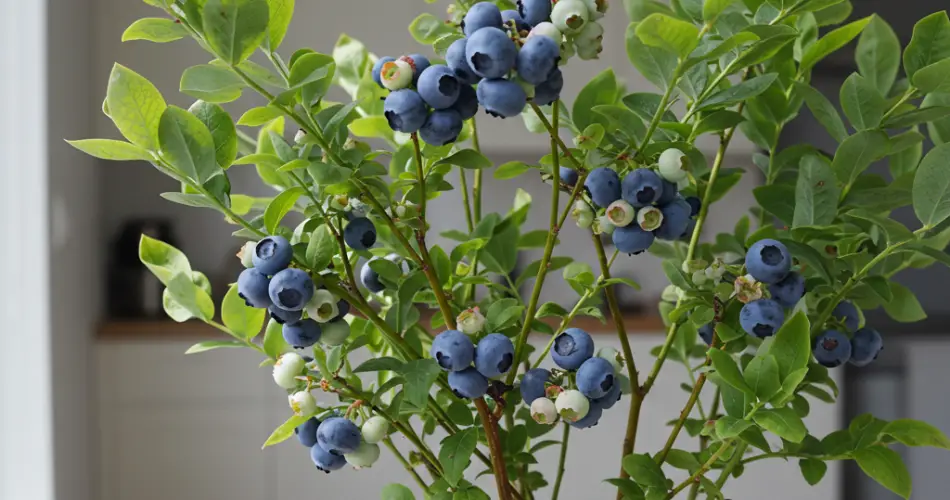Blueberries are a delicious, antioxidant-rich fruit that many assume can only be grown outdoors in large garden beds or fields. But did you know you can successfully grow blueberries indoors, even in small spaces? With the right conditions and a bit of patience, you can enjoy fresh, homegrown blueberries right from your kitchen, balcony, or sunroom.
Growing blueberries indoors not only brings nature into your home, but it also allows you to control the growing environment more easily—helping you avoid pests, frost damage, and other outdoor risks. Follow these tips to get started and impress your friends and neighbors with your berry bounty.
1. Choose the Right Blueberry Variety
Not all blueberry bushes are suitable for indoor growing, so selecting the right type is crucial. For container or indoor environments, dwarf and compact varieties are best. Look for:
-
Top Hat – A self-pollinating dwarf variety that only grows 18–24 inches tall, perfect for pots.
-
Northblue – Compact and cold-hardy, producing sweet, flavorful berries.
-
Sunshine Blue – Semi-dwarf and highly ornamental, with pink flowers and high fruit yields.
Choose self-pollinating varieties to ensure fruit production with just one plant. However, keeping two different varieties can sometimes enhance pollination and boost yields.
2. Select a Suitable Container
Blueberries have shallow root systems, so they don’t need deep containers—but they do require room to spread and proper drainage. Use:
-
A pot or bucket at least 16–20 inches wide and 12–16 inches deep.
-
Containers made of plastic, ceramic, or fabric grow bags with multiple drainage holes.
Make sure to place a tray underneath to catch excess water, especially if the plant will be indoors full time.
3. Prepare the Right Soil
Blueberries are acid-loving plants, preferring a soil pH between 4.5 and 5.5. Most standard potting mixes are too alkaline, so you’ll need to make or buy an acid-friendly mix.
You can create a suitable mix by combining:
-
50% peat moss or coco coir
-
40% pine bark or composted wood chips
-
10% perlite or sand for drainage
Check your soil pH regularly using a soil tester and adjust with sulfur or citric acid if needed.
4. Give Them Plenty of Light
Blueberries need at least 6 to 8 hours of direct sunlight daily. Indoors, place your plant near a south- or west-facing window. If you don’t have enough natural light, supplement with full-spectrum grow lights for 10–12 hours a day.
Without sufficient light, the plant may grow weakly and produce few or no berries. Lighting is often the biggest challenge in indoor blueberry growing, but it’s entirely manageable with good placement or artificial light.
5. Watering and Humidity
Blueberries like consistently moist but not soggy soil. Here’s how to water properly:
-
Keep the soil evenly moist—never let it dry out completely.
-
Use rainwater or distilled water if your tap water is high in calcium or alkaline.
-
Mist the leaves occasionally or place the pot on a humidity tray, especially during winter when indoor air is dry.
Check the soil daily with your finger. If the top inch feels dry, it’s time to water.
6. Fertilizing for Healthy Growth
Indoor blueberries benefit from regular feeding, especially in containers where nutrients wash out easily. Use a fertilizer formulated for acid-loving plants, such as those made for azaleas or rhododendrons.
-
Fertilize once a month from early spring to mid-summer.
-
Avoid over-fertilizing, as this can lead to excessive leaf growth and poor fruiting.
Organic options like fish emulsion, compost tea, or seaweed extract are also excellent choices.
7. Pruning and Maintenance
Prune your indoor blueberry plant lightly to keep its shape compact and to encourage airflow and healthy growth.
-
Remove any dead or weak stems.
-
In the second year, start thinning older branches to stimulate new growth.
-
Avoid heavy pruning in the first year to let the plant establish.
Also, watch for any signs of pests or disease. Though rare indoors, spider mites or fungal spots may appear if the air is too dry or stagnant.
8. Simulate Winter Chill for Better Harvests
Most blueberry varieties require a chilling period to fruit well. If you live in a warm climate or keep the plant indoors year-round, you’ll need to mimic winter dormancy:
-
In late fall, move the pot to a cool location (35–45°F / 1–7°C) like a garage or unheated porch.
-
Let the plant “rest” for about 400–800 chilling hours, depending on the variety.
-
Reduce watering during this period.
Afterward, bring it back into warmth and light, and it will begin to grow again in spring.
9. Harvesting Your Indoor Berries
Blueberries ripen about two months after flowering. Wait until the berries turn fully blue and slightly soft before picking. Ripe berries will detach easily when gently tugged.
Harvest regularly to encourage more production, and enjoy them fresh, in smoothies, or baked into delicious treats.
Conclusion
Growing blueberries indoors is both rewarding and practical. With the right variety, acidic soil, plenty of light, and proper care, you can enjoy sweet, homegrown berries in your own living space. Not only will you have a fresh supply of nutritious fruit, but your thriving blueberry plant is sure to be a talking point—and maybe even make your neighbors a little envious.



